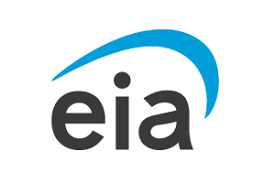· Brian Horton · Natural gas storage · 4 min read
U.S. Natural Gas Storage Surges by 96 Bcf as Prices Drop to 5-Week Low – EIA Report June 2025
U.S. natural gas storage rose by 96 Bcf to 2,898 Bcf for the week ending June 20, 2025, marking the tenth consecutive above-average injection. Strong production and reduced LNG exports pressured futures to a five-week low near $3.42/MMBtu, despite continued hot weather forecasts.

Natural gas storage in the United States rose sharply during the week ending June 20, 2025, according to the U.S. Energy Information Administration (EIA). Working gas in underground storage for the Lower 48 states totaled 2,898 billion cubic feet (Bcf), a net increase of 96 Bcf from the previous week. This build outpaced market expectations and reinforced bearish sentiment in futures markets, with natural gas prices dropping toward $3.42 per MMBtu — the lowest in over a month.
Despite seasonal trends that typically support natural gas demand during the onset of summer, this marks the tenth consecutive week of above-average injections, driven largely by strong domestic production and a mild short-term outlook for cooling demand. The total storage volume now stands 179 Bcf above the five-year average of 2,719 Bcf and remains within historical norms for this time of year.
Supply Dynamics Support a Steady Storage Build
One of the most significant factors behind the robust injection was increased natural gas production. Average daily output in the Lower 48 states rose to 105.5 Bcf/day in June, up slightly from 105.2 Bcf/day in May. This steady supply growth has cushioned the storage system, even as short-term weather fluctuations alter immediate consumption trends.
The South Central region led the week’s storage build with a 29 Bcf increase, largely supported by non-salt storage fields, which added 27 Bcf alone. The East and Midwest regions followed closely, contributing 26 Bcf and 27 Bcf, respectively. Notably, even the Pacific and Mountain regions, where capacity tends to be tighter, each saw modest builds of 7 Bcf. These consistent gains across all regional storage hubs highlight the breadth of supply resilience across the U.S.
Weather and Demand: Short-Term Heat Fades, Cooling Demand Stalls
Although weather forecasts still point to hotter-than-average conditions across much of the country through early July, the peak of this week’s heatwave is expected to subside. This temperature shift could limit cooling-related demand for natural gas-fired power generation, creating additional headwinds for prices and reducing near-term storage withdrawals.
At the same time, gas flows to U.S. liquefied natural gas (LNG) export terminals have dropped to 14.1 Bcf/day so far in June, down from 15.0 Bcf/day in May. This reduction in export volume eases some pressure on domestic supply, further contributing to robust underground storage builds.
Market Impact: Natural Gas Futures Face Downward Pressure
The larger-than-expected injection and stable production outlook have weighed on market sentiment. U.S. natural gas futures slipped to around $3.42/MMBtu, extending a multi-week decline. While weather remains a potential wild card — especially if heat intensifies deeper into summer — the fundamentals currently suggest a market that is well-supplied and structurally sound.
Longer-term, traders will keep a close eye on shifts in LNG demand, power sector usage, and potential production changes as factors that could impact future storage trends. But for now, the data continues to favor a market in balance, with storage levels steadily replenishing ahead of the winter draw season.
Outlook: Storage Remains Comfortable, But Eyes Stay on Exports and Summer Heat
With working gas inventories now firmly above the five-year average and only 6.3% below levels from this time last year, the market appears to be in a stable position. However, volatility may increase as the summer unfolds, particularly if global LNG demand recovers or domestic consumption surges in response to prolonged heat events.
The next Natural Gas Storage Report is scheduled for release on July 3, 2025. Until then, traders and analysts will be closely monitoring daily production data, weather models, and export trends to gauge whether the current pace of injections can be sustained — and how that will shape both prices and storage capacity ahead of peak demand seasons.
- EIA natural gas report
- natural gas storage
- U.S. gas inventory